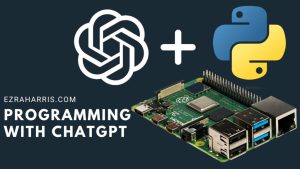Tag: RPI Project
-

Drone Light Show (Part 1) – Research
I’ve been recently looking into building custom drones for a light show. A drone light show is a fleet of drones with lights that fly synchronously to display an image or animation in the sky. Each drone has a GPS tracking device to ensure proper distance and movement. One central base station on the ground…
-

ChatGPT for Learning Programming?
I am honestly amazed by some of the technology. Using the power of this AI and my knowledge of basic programming, I could build a script that did all of the tasks I had before listed and display them to my display. And this was the result, a working screen display for my desk:
-
Octoprint
Over the year, I’ve used Octoprint for my 3d printers. Octoprint is a server that hosts on a Raspberry Pi (and now even an Android device), which then you connect to your printer, which you can connect using the local IP. Octoprint is mainly used for managing your prints since it’s a lot easier to…
-
Setup Cloudflare DNS Proxy for Server
Recently when setting my WordPress site, one of the requirements I wanted to meet was having a proxy server protect it. Basically, a proxy server is where another person’s server hides the original IP of the base server. For example, this image: In my case, I wanted my public IP to be not seen by…